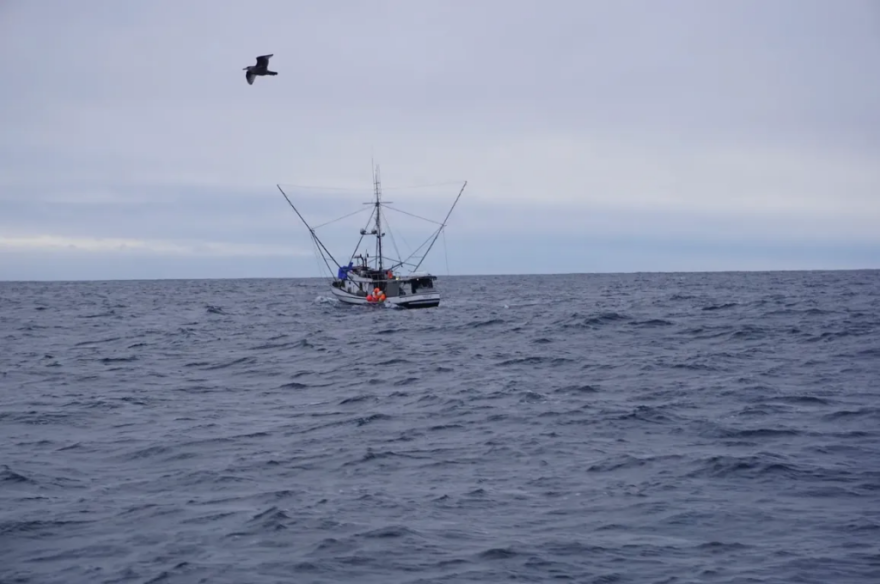A federal appeals panel issued a last-second ruling Wednesday that will allow this summer’s Southeast Alaska troll chinook salmon fishery to open as scheduled July 1 — reversing a lower court ruling that would have kept the $85 million industry off the water.
“It’s a major victory,” Alaska Fish and Game Commissioner Doug Vincent-Lang said in a brief phone interview. “We can go fishing.”
The panel, in a five-page ruling, said that the entities defending the fishery — the Alaska Trollers Association, the state of Alaska and the National Marine Fisheries Service — met the legal standard required to grant what’s known as a “stay” of the lower court ruling.
The decision, the panel said, was based on the likelihood that those entities could show that the “certain and substantial impacts” of closing the harvest on the Alaska salmon fishing industry outweigh the “speculative environmental threats” posed by allowing the fishery to take place.
The Washington-based environmental group that sued in an effort to shut down the harvest, the Wild Fish Conservancy, argued that allowing the fishery to continue would harm a population of 73 endangered orca whales that live off the coast of Oregon, Washington and British Columbia.
The “Southern Resident” orcas depend on chinook salmon for most of their diet. But the two sides in the case sharply disagreed about how much closing the Southeast Alaska troll fishery would help.
One expert working with Wild Fish Conservancy argued that up to 97% of Alaska-caught chinook originate from rivers in Canada, Washington, Oregon and Idaho. And she said that the National Marine Fisheries Service is allowing harvests in Southeast Alaska “at levels that will lead to the continued starvation of Southern Residents, causing the species to hasten its decline towards extinction.”
But another scientist working with the Alaska Trollers Association said that the share of Alaska-caught chinook that originate outside the state could be as low as 75%. And he testified that if chinooks are spared from harvest by Alaska fishermen, many would still be eaten by predators or caught in other fisheries instead of being eaten by the Southern Resident orcas.
Defenders of the troll fishery argue that habitat degradation and pollution in the orcas’ home region, including in Puget Sound near Seattle, are bigger factors in the whales’ decline.
Emma Helverson, the Wild Fish Conservancy’s executive director, didn’t immediately respond to a request for comment about Wednesday’s decision.
The legal dispute began in 2020. After dozens of legal filings, a Seattle-based federal district judge, Richard Jones, issued a ruling early last month that had the effect of closing the summer chinook harvest.
Specifically, Jones’ decision invalidated a key document published by the National Marine Fisheries Service that said the trollers could harvest chinook without harming the Southern Resident orcas — a necessary finding under the Endangered Species Act.
The trollers’ defenders appealed to the 9th Circuit Court of Appeals, and asked for a stay of Jones’ decision while the two sides’ underlying arguments play out.
Their request drew support from Alaska’s Congressional delegation and more than 20 Alaska tribes and Native corporations, who submitted friend-of-the-court briefs on the trollers’ behalf.
“That may have been critical,” said Matt Donohoe, president of the trollers association. “I’m choked up. Really grateful.”
Wednesday’s ruling quickly reverberated across Southeast Alaska, where the troll industry employs some 1,500 skippers and crew, sustains jobs in processing plants and generates tax revenue for communities throughout the region.
“I'm in my office, crying, trying to confirm this with everybody,” said Celeste Weller, who manages sales and fish processing at Yakobi Fisheries, in the tiny Southeast Alaska town of Pelican. “I started out in fishing as a deckhand, and then I trolled my own boat. My boyfriend is a troller; most of my friends here are trollers. My boss who runs the company, he started out trolling. It's personal. It’s business. It's everything for us right now.”
In the Prince of Wales Island town of Craig, population 1,000, there are between 20 and 30 trollers, said Mayor Tim O’Connor, who’s also the vice president of the Alaska Trollers Association.
A closure, he added, “would have thrown most of these small communities into a complete tailspin.”
While trollers also harvest coho salmon during the summer season, chinook typically make up between 40% and 50% of the fleet's yearly harvest value, according to a 2019 study.
“This is a very key portion of their annual income,” O’Connor said.
Trollers usually fish alone or with a single deckhand. They use hooks and lines to catch one fish at a time, and supply high-grade salmon filets that can fetch $40 a pound at grocery stores across the country.
Weller, from the Pelican fish processing company, said there's "absolutely" still a market for the king salmon that trollers will be allowed to harvest when the season opens next week.
"I've got my whiteboard with my orders behind me, and it's thousands and thousands of pounds," she said.
Trollers now face a scramble to plan for the summer harvest, after weeks of uncertainty about whether they’d be able to fish at all.
One woman working with a small Southeast Alaska trolling business told Northern Journal that on Tuesday, she bought chinooks caught by a seiner — a different type of fishing boat — to sell to her customers, assuming that she would have no troll-caught chinooks to sell this summer.
But others expressed pure relief, and said Wednesday’s ruling will give trollers enough time to prepare their boats and gear by July 1.
“They’ll be ready,” said O’Connor. “This gives them enough time to scramble.”
This article was originally published in Northern Journal, a newsletter from journalist Nathaniel Herz. Subscribe at this link.

